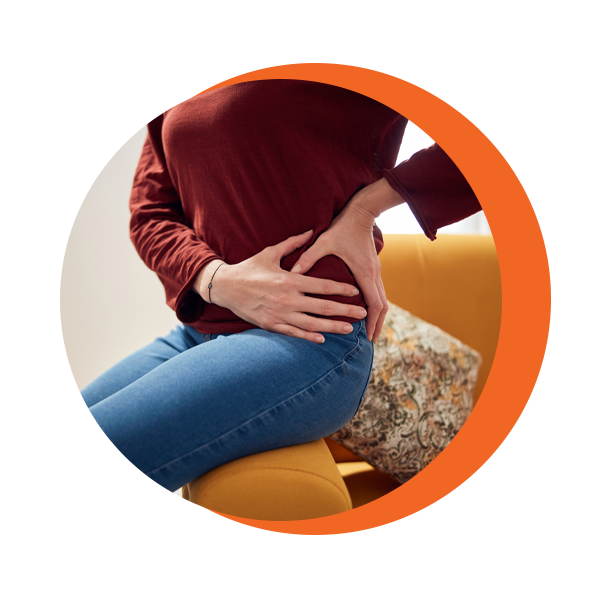As the largest ball-and-socket joint in the body, the hip is an intricate joint held together by various muscles, tendons and cartilage. The hip is responsible for supporting the body and providing stability, while also enabling a vast range of mobility that lets us walk, run and play sports.


The hip joint serves to connect the upper leg to the trunk of the body by joining together two bones: the femur and the pelvis. The femur is one of the longest bones in the human body and is also called the thigh bone, while the pelvis is composed of three bones called the ilium, ischium and pubis.
Ligaments are essential to providing stability to the hip joint, as they connect bones to other bones. There are numerous ligaments in the hip, including:
Along the thigh and the pelvis, there are multiple kinds of muscles that permit a wide range of motion. Some of the hip muscles are:
Bursitis occurs when the bursa, a fluid filled sac in the joint, becomes inflamed. The bursa works as a cushion and gliding surface to limit friction in major joints like the hips, shoulders, elbows and knees. There are two prominent bursae of the hip that can cause hip bursitis:
Bursitis may result in pain, localized tenderness, limited motion, swelling and redness. Pain will often become worse at night when lying down, or with prolonged exercise. The condition may develop due to injury, overuse, spinal abnormalities, arthritis, or surgery.
The labrum is a ring of cartilage that is situated on the outside rim of your hip joint socket to keep the ball and socket together, but without touching. The labram cushions your hip joint, and lets it move without problems or pain. A labral tear may occur from the following:
When a labral tear develops, you may feel hip pain or stiffness, pain in the groin or buttocks area, a clicking, locking, or catching sensation in your joint, a limited range of motion, or a sense of unsteadiness on your feet. A labral tear can be treated with minimally invasive surgery, NSAIDs, a corticosteroid shot, or physical therapy to re-strengthen the joint.
FAI is a condition in which the ball of the hip pinches against the socket of the hip, causing damage over time. Also called hip impingement, this condition typically occurs when one or more of the bones in the hip have a slightly irregular shape, which causes the bones to rub abnormally against each other. There are three types of FAI:
In many cases, these abnormalities may be present at birth, but it is also possible to develop FAI over time, especially in athletes who compete in sports with frequent twisting and squatting. FAI causes pain and stiffness in the groin and in the front of the thigh. Pain may be exacerbated by bending of the hip or at the waist.
Upon diagnosis, your doctor may recommend rest, activity modification, NSAIDs, or physical therapy. Depending on how successful nonsurgical treatments are, FAI may require surgery.
Sciatica is a condition relating to a problem with the sciatic nerve, typically affecting only one side of your body. Beginning in the lower back, the sciatic nerve branches down through your hips and buttocks and down each leg. Sciatica develops when the nerve is irritated, inflamed, pinched, or compressed, often from a herniated or slipped disc.
You may be at greater risk of sciatica if you:
Most people make a full recovery from sciatica with non-operative treatments like medications, corticosteroid injections and physical therapy. However, sciatica can cause permanent nerve damage if not adequately treated, which can result in a loss of feeling in your affected leg.
Fortunately, physical therapy may reduce many of the symptoms associated with hip pain. Whether you are an elite athlete or a weekend warrior, our certified doctors of physical therapy are ready to help you regain mobility and live pain-free.
Fill out the form below and we will get back to you shortly on scheduling your appointment date!

CONTACT:
833-4 WE HEAL (833-493-4325)
Fax: 833-918-2233
[email protected]
WORKING HOURS:
Monday – Friday
8:00AM – 5:00PM